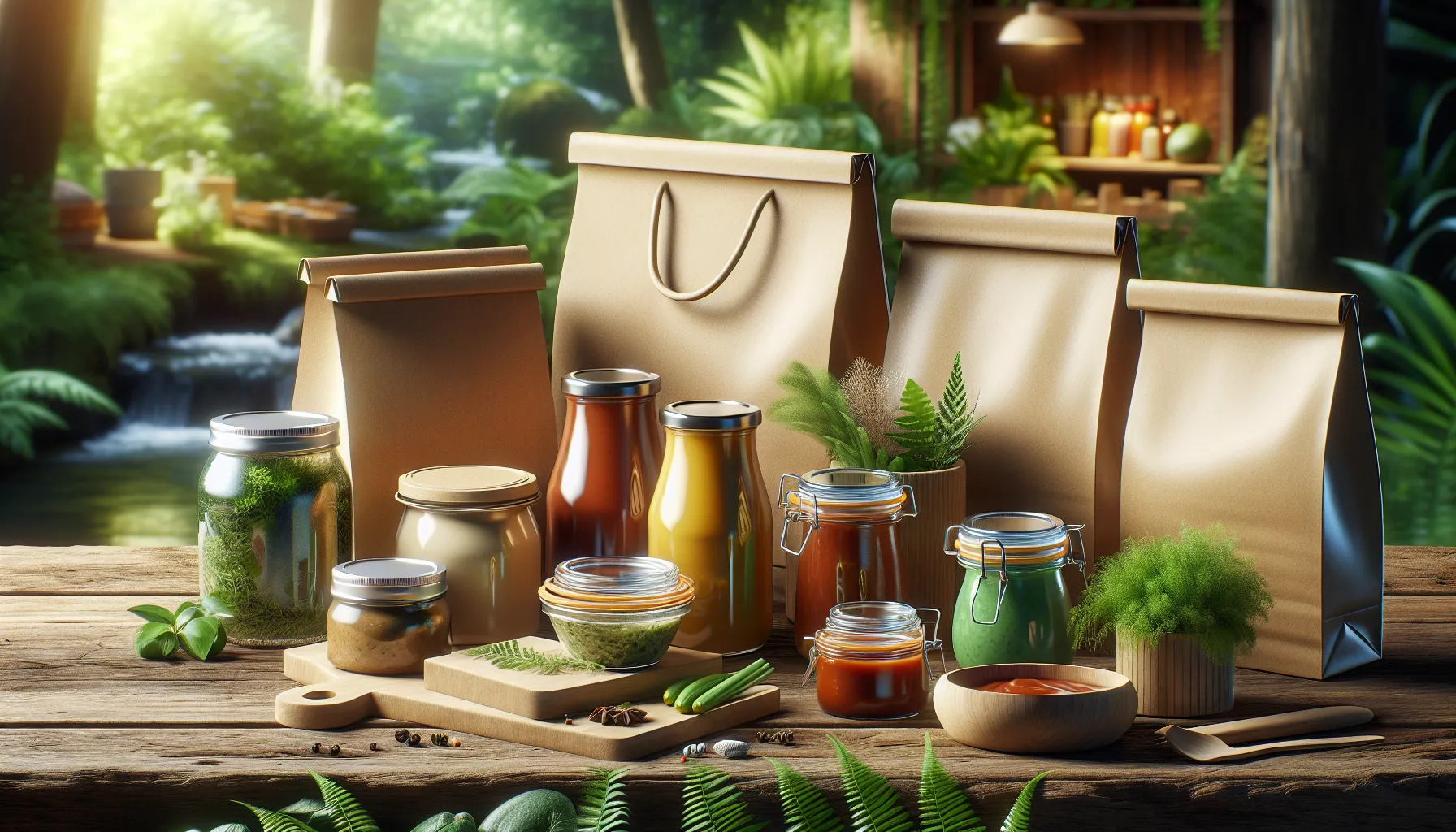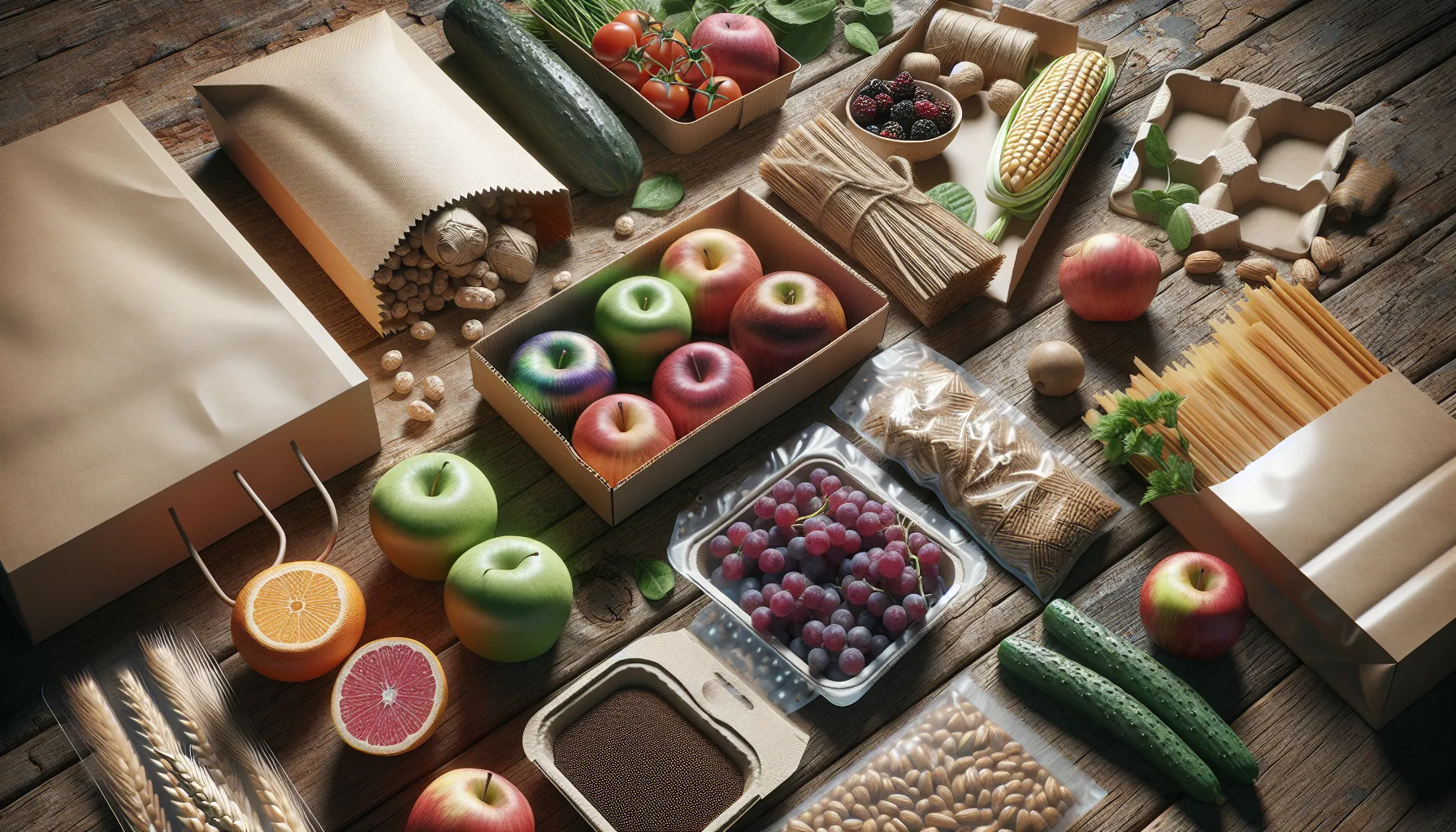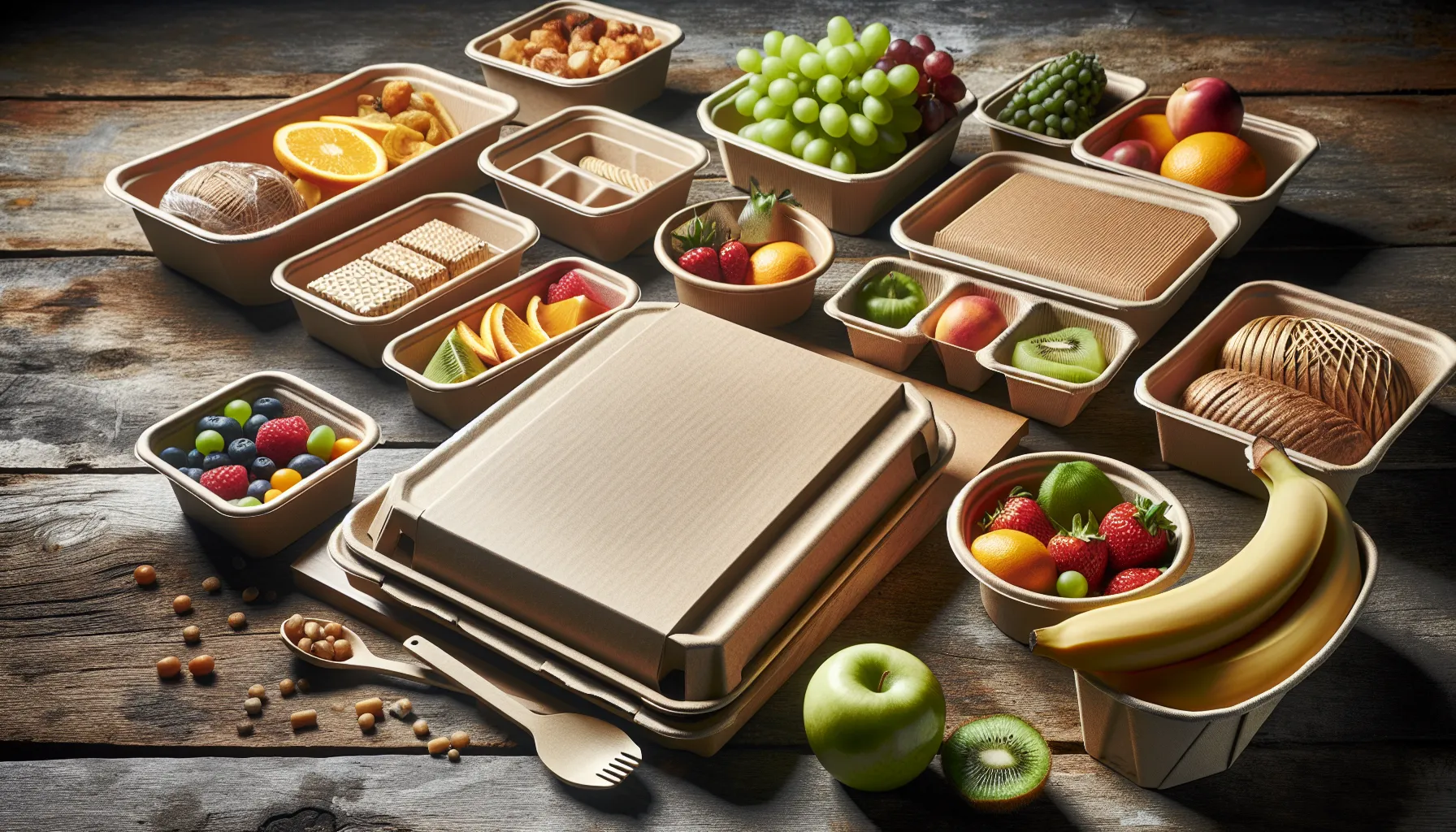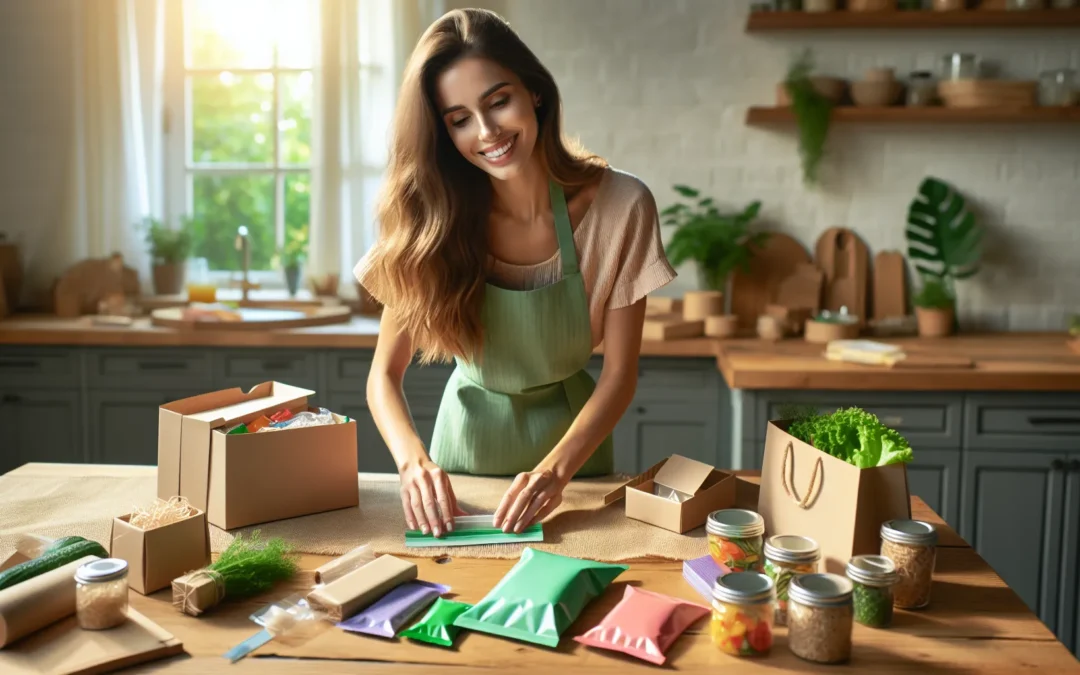Key Takeaways
- Food packaging is vital for online businesses, serving both functional and branding purposes by maintaining product quality and creating memorable customer experiences.
- Sustainability matters; eco-friendly options like biodegradable materials, compostable packaging, and recyclable designs appeal to environmentally conscious shoppers.
- Innovative and creative designs such as custom die-cuts, interactive QR codes, and bold visuals enhance brand recognition and customer engagement.
- Durable and secure packaging solutions, including vacuum-sealed bags, tamper-proof seals, and insulated options, ensure safe delivery for perishable or fragile items.
- Key factors to consider when choosing packaging include material sustainability, cost-effectiveness, product size, functionality, and compliance with food safety standards.
- Emerging trends like personalization and minimalism in packaging drive stronger customer connections and align with current consumer expectations.
Starting an online food business is exciting, but let’s be honest—how you package your products can make or break the experience for your customers. It’s not just about keeping the food fresh; it’s about creating a memorable unboxing moment that leaves a lasting impression. Packaging is your first handshake with the customer, and it speaks volumes about your brand.
I’ve always believed that good packaging does more than protect—it tells a story. Whether you’re selling homemade cookies or gourmet meals, the right packaging can elevate your brand and even boost customer loyalty. Plus, with so many creative and sustainable options out there, it’s easier than ever to stand out while being eco-friendly.
Importance Of Food Packaging For Online Businesses
Food packaging isn’t just functional; it directly impacts customer satisfaction and brand success. For online businesses, thoughtful packaging merges practicality with brand storytelling.
Ensuring Freshness And Quality
Packaging protects food from spoilage and contamination during transit. Proper sealing, insulating materials, and vacuum-sealed options maintain freshness for perishable items like baked goods or frozen meals. For example, insulated boxes with gel packs keep temperature-sensitive products fresh upon delivery.
Enhancing Customer Experience
Appealing packaging elevates the unboxing moment, creating positive customer memories. Easy-to-open designs, tamper-proof seals, and added surprises like sample products enhance engagement. For instance, businesses including custom messages in their boxes add a personal touch.
Strengthening Branding And Marketing Efforts
Packaging serves as a direct branding tool that reinforces identity. Printing logos, custom colors, or unique designs on boxes boosts brand recall. QR codes or social media handles on packages encourage customer interaction. A pizza brand, for example, could add a scannable code for instant deals or loyalty rewards.
Types Of Food Packaging Ideas

Effective food packaging combines functionality and aesthetics. Tailoring packaging to suit your brand’s values and the product ensures a better experience for your customers.
Eco-Friendly Packaging Options
Eco-friendly packaging options reduce environmental impact while supporting sustainable practices. Materials like kraft paper, biodegradable plastics, compostable bags, and recyclable cardboard are common. For example, I’ve noticed businesses using reusable glass jars for jams or sauces, minimizing waste and adding a premium touch. Plant-based inks and water-based adhesives can enhance the sustainability of your design without compromising quality or look.
Innovative And Creative Packaging Designs
Innovative designs make food packaging memorable and functional. Custom die-cut boxes, window packaging, and origami-inspired wraps often grab attention. I’ve seen brands incorporate interactive elements like QR codes that lead to recipes or brand stories. Playful graphics, bold colors, or minimalistic designs aligned with branding ensure packaging resonates with the target audience. For gift-ready foods, unique bundling, such as nested boxes or ribbon-tied cartons, adds sophistication.
Durable And Secure Food Packaging Options
Durable packaging prioritizes protection for safe delivery. Options like vacuum-sealed pouches, tamper-evident seals, and insulated bags ensure food freshness for long distances. I find that sturdy corrugated boxes paired with food-grade liners work well for heavier products like baked goods. Leak-resistant containers or jars with tight-fitting lids are ideal for liquids or semi-solid foods like soups and spreads, reducing the risk of spillage during transit.
Factors To Consider When Choosing Food Packaging

Choosing the right food packaging impacts both brand perception and product quality. Several essential factors guide this decision-making process.
Material And Sustainability
Material and sustainability play a major role in food packaging. I prioritize options like compostable materials, recyclable cardboard, or biodegradable plastics to reduce environmental impact. For example, kraft paper or plant-based film can provide sustainable alternatives while still maintaining durability and aesthetic appeal. Selecting eco-friendly materials reflects positively on my brand and resonates with eco-conscious customers.
Cost-Effectiveness
Cost-effectiveness ensures I balance quality with budget efficiency. I evaluate packaging options by comparing bulk pricing and material durability to avoid overspending. For example, flexible pouches often cost less to produce and ship than rigid containers while still maintaining functionality. By minimizing expenses, I enhance profitability without compromising quality.
Size And Functionality
Size and functionality determine how effectively packaging protects and presents food. I select sizes proportionate to my products, reducing waste and shipping costs. Functional designs, like resealable bags or compartmentalized trays, provide convenience to customers. Properly fitting and user-friendly packaging improves the overall experience and minimizes damage risks during transit.
Compliance With Food Safety Standards
Compliance with food safety standards ensures product safety and legal adherence. I review FDA guidelines for direct food contact materials and confirm suppliers provide certifications. Packaging must prevent contamination and preserve freshness, especially for perishable items like baked goods or frozen meals. Adhering to these standards protects my customers and builds trust in my brand.
Popular Trends In Food Packaging For Online Businesses

Food packaging plays a significant role in how online businesses connect with their customers. Emerging trends reflect the balance between aesthetics, environmental consciousness, and brand storytelling.
Minimalistic And Functional Designs
Simplicity attracts attention by emphasizing clean typography, neutral colors, and uncluttered layouts. Minimalistic designs reduce visual noise while focusing on essential brand elements. For example, packaging with monochromatic themes or clear labels makes information easily digestible. Functional designs, such as resealable bags or stackable boxes, enhance usability and prolong product freshness.
Personalization And Custom Branding
Customized packaging creates a stronger connection with customers. Personal touches like thank-you notes, custom logo placements, or limited-edition designs boost brand recognition. I’ve seen companies use personalized prints for special occasions or seasonal offerings to engage repeat buyers. QR codes linking to exclusive content or recipes also enhance interactivity and customer loyalty.
Biodegradable And Compostable Solutions
Sustainable packaging resonates with eco-conscious consumers. Materials like kraft paper, plant-based plastics, and compostable film provide eco-friendly alternatives without sacrificing quality. I recommend using biodegradable pouches or compostable trays for foods like dry snacks or ready meals. Clear labeling of sustainability features also helps communicate a brand’s commitment to the environment.
Tips For Implementing Effective Food Packaging Ideas
Optimizing food packaging helps ensure a great customer experience while strengthening brand loyalty. Below are strategies to make packaging both functional and appealing.
Collaborating With Packaging Suppliers
I find that partnering with reliable suppliers simplifies the process of sourcing high-quality materials. Building strong communication ensures they understand brand requirements such as eco-friendliness, personalization, or specific sizes. For example, sharing a mood board or design samples with suppliers can streamline the customization process. Working with suppliers offering bulk discounts can also help maintain cost efficiency.
Testing Packaging For Durability And Safety
It’s essential to test packaging under real conditions to assess its durability during transit. I simulate shipping scenarios, including rough handling, temperature changes, and storage, to spot weaknesses in materials or seals. For instance, I evaluate if tamper-evident seals remain intact or if vacuum-sealed pouches retain freshness over time. Performing these tests prevents potential customer dissatisfaction and ensures food safety.
Gathering Customer Feedback On Packaging
Customer feedback provides valuable insights into packaging effectiveness. I encourage reviews by asking questions like, “Was the package easy to open?” or “Did it preserve freshness?” If trends emerge, like frequent requests for resealable options or more sustainable materials, I act by updating designs. Incentivizing feedback through small discounts or loyalty points often drives higher participation rates.
Conclusion
Food packaging is so much more than just a container for your products. It’s a chance to tell your brand’s story, connect with your customers, and leave a lasting impression. By combining creativity, functionality, and sustainability, you can create packaging that not only protects your food but also resonates with your audience.
Remember to stay true to your brand values while keeping your customers’ needs in mind. Thoughtful packaging can elevate your online food business, turning a simple purchase into an experience your customers will remember and appreciate.
Frequently Asked Questions
Why is packaging important for an online food business?
Packaging is crucial because it preserves food freshness, prevents contamination, and enhances the unboxing experience. It reflects your brand identity, builds customer trust, and contributes to brand loyalty.
How can packaging strengthen a brand’s identity?
Packaging can highlight your brand’s story through designs, logos, and colors. Custom branding, personal touches, and eco-friendly materials can also help make a lasting impression on customers.
What are some eco-friendly food packaging options?
Eco-friendly options include kraft paper, biodegradable plastics, compostable containers, and reusable packaging. These materials reduce environmental impact while maintaining product quality.
Why is compliance with food safety standards necessary for packaging?
Compliance ensures that food remains safe for consumption, prevents contamination, and protects your customers while boosting your brand’s credibility.
What types of packaging are ideal for perishable food items?
Durable options like vacuum-sealed pouches, tamper-evident seals, and insulated packaging are ideal for preserving freshness and preventing spoilage during transit.
How can food packaging improve the customer experience?
Packaging improves the experience through easy-to-open designs, personalization, and practical features like resealable bags. It also connects with customers via interactive elements like QR codes.
What factors should I consider when choosing food packaging?
Consider material sustainability, cost-effectiveness, functionality, size, and compliance with safety regulations. A balance between aesthetics and practicality is ideal.
How does personalization in packaging help my brand?
Personalization, such as custom messages or designs, creates a unique connection with customers, making your brand more memorable and fostering loyalty.
What are the current food packaging trends for online businesses?
Trends include minimalistic designs, biodegradable materials, functional features like resealable bags, and branded, interactive elements like QR codes.
How can I test food packaging effectiveness?
Test packaging under real shipping conditions to ensure durability, food safety, and preservation. Gathering customer feedback can also help refine designs that meet expectations.

